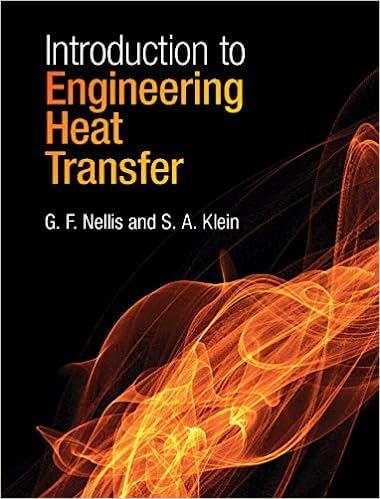Answered step by step
Verified Expert Solution
Question
1 Approved Answer
Power stations use large quantities of water and have substantial impacts on the environment. A power station consisting of 5 units each with a generating
Power stations use large quantities of water and have substantial impacts on the environment. A power station consisting of units each with a generating capacity of MW megawatt uses wet evaporative cooling to cool the water from the condensers.
a Calculate the volume of water used daily in md by the power station if the specific water consumption is LKwh
b Assume that the water flow to each cooling tower is Ls and that the water is cooled from to oC Losses from the system include evaporation, windage and blowdown. Evaporation is estimated at loss of the recirculating flow per oC drop in temperature; windage very small water droplets lost from the cooling tower is of the recirculating flow. The cooling water makeup equals the sum of losses. Calculate the volume of blowdown and the volume of makeup water if the TDS Total Dissolved Solids in the cooled water leaving the cooling tower is allowed to increase to a level of three times that in the makeup water.
c The blowdown from the system has a TDS of mgL and is not allowed to be discharged. It has been decided to desalinate and reclaim the blowdown for reuse in the system. Both reverse osmosis RO and electrodialysis reversal EDR are considered to desalinate the water. Describe the main differences between the two processes and do an evaluation of each process for this application. Which process would you recommend? Motivate your answer.
d It has been decided to install an RO plant to desalinate the blowdown from the cooling tower and to recycle the desalinated water to the cooling system. The RO plant has a TDS rejection of and the water recovery is Draw a flow diagram of the system and calculate the volume of permeate and brine if the feed is MLd Calculate the TDS concentration in the permeate and the brine if the feed TDS is mgl
e Comment on the optimum membrane array configuration that would provide the highest permeate flow rate.
f The permeate is recycled to the makeup of the cooling water system. This reduces the amount of fresh water makeup required to maintain the TDS in the water that enters the cooling tower below mgl Draw a flow diagram of the system, draw up a water and TDS mass balance for the cooling system incorporating the permeate recycle and calculate the volume of makeup required to maintain the TDS below mgl in the system assuming that conditions of evaporation and windage losses remain unchanged. The TDS of the makeup water is mgl
g Calculate the area of an evaporation dam in ha to dispose of the brine from the RO plant if the average annual rainfall is mma and the annual average evaporation rate is mma The water level in the dam is not allowed to exceed m after years.
Step by Step Solution
There are 3 Steps involved in it
Step: 1

Get Instant Access to Expert-Tailored Solutions
See step-by-step solutions with expert insights and AI powered tools for academic success
Step: 2

Step: 3

Ace Your Homework with AI
Get the answers you need in no time with our AI-driven, step-by-step assistance
Get Started


